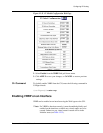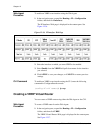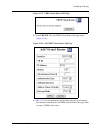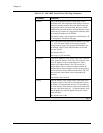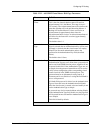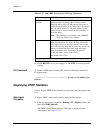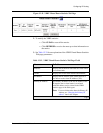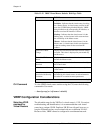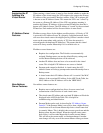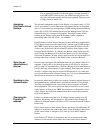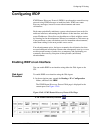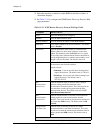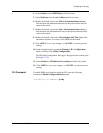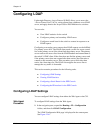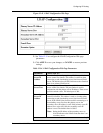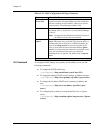
Document No. 10-300077, Issue 2 12-81
Configuring IP Routing
Assigning the IP
Address of a
Virtual Router
When creating a virtual router, it must be first decided whether to make the
IP Address of the virtual router (the VIP) unique or the same as the Primary
IP Address of the associated IP Interface address. If the VIP is unique, this
is known as non-IP Address Owner. This means the VIP is not "owned" by
the router as a Primary IP Address. If the VIP is not unique, meaning it
matches the Primary IP Address of the associated IP Interface, then this is
known as IP Address Owner. The VIP Address is "owned" by the associated
IP Interface. Each method will be discussed below in more detail.
IP Address Owner
Features
IP address owner allows for the highest possible priority. A Priority of 255
is reserved for IP Address Owner. In a properly configured network, there
will never be a virtual router with a higher priority (if there is another virtual
router on the same subnet with a priority of 255, then the network is
misconfigured with duplicate IP Addresses). This means that this virtual
router will always assume Mastership if it is available to do so.
IP address owner features are:
■ Requires less configuration. The Priorities are automatically
assigned. Backup routers can use the default Priority settings and
correct Master-Backup election will be achieved.
■ Another IP Address does not have to be reserved for the virtual
router. This is helpful if IP Addresses are scarce or limited.
■ Preempt mode cannot be disabled. A virtual router that is IP
Address Owner will always preempt and assume Mastership from a
Backup router.
■ A virtual router that is IP Address Owner will “overwrite” the MAC
Address of the associated IP Address. In the ARP Cache Table, the
MAC Address of the IP Address will be the VRRP MAC.
Non-Address
Owner Features
Non-address owner features are:
■ Requires more configuration but allows for more control and
customization of the Priorities of each virtual router.
■ The virtual router IP Address and associated IP Address will both be
displayed in the ARP Cache Table. This is helpful for
troubleshooting and identification.
■ Preempt Mode can be used. As described in “IP Address Owner
Features,” if the Preempt Mode is set to False, then a higher Priority
virtual router will not assume Mastership from a virtual router that
is currently Master. This is helpful when a router goes down and the
Backup router becomes Master. When the original router comes
back online, it will not take Mastership from the current Master.
This will allow the current traffic to remain unchanged. Another
state change will only occur if the current Master router goes down.



